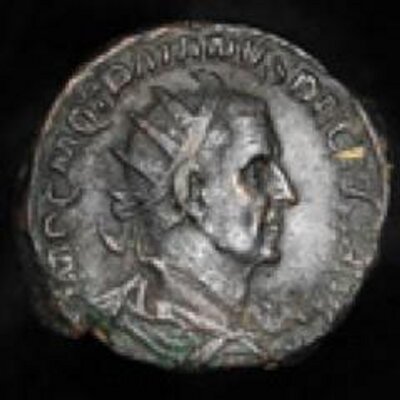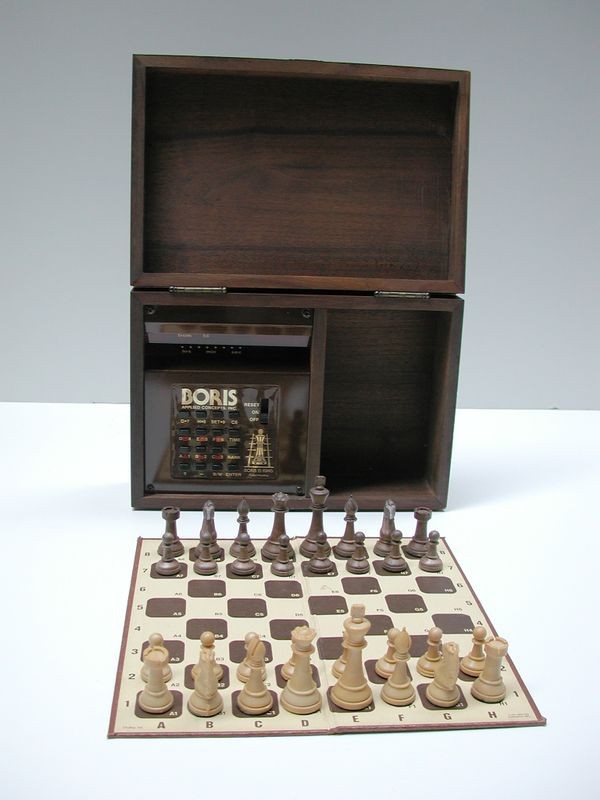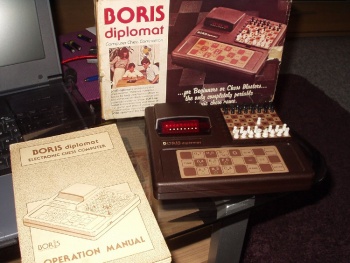Home * Organizations * Chafitz
Original Chess Computer. BORIS Comes with chess pieces, Adapter Transformer, and original wood box with serial number. Also will include a downloaded instruction manual since I do not have original. Items in the Worthopedia® are obtained exclusively from licensors and partners solely for our members’ research needs. DGT Centaur Chess Computer Set Smart Digital Electronic Learn. 5 out of 5 stars (1) Total Ratings 1, $349.90 New. Square off Kingdom Chess Set Innovative AI Electric Chessboard Wooden Board Game. 5 out of 5 stars (2) Total Ratings 2, $579.99 New. My local library received a donation; a chess computer from 1979! The computer honestly isn't that skilled. It has a small opening book, and it makes blunder.
Chafitz (Chafitz Inc.),
a marketing and retail enterprise founded in the early '70s by Arleen and Steve Chafitz, located in Rockville, Maryland. Chafitz Inc. dominated the consumer electronics market when that industry segment was in its infancy with products such as electronic calculators, digital watches, handheld TVs, video games, consumer video recording equipment, telephone answering machines, pocket recorders and numerous other items. They have been credited with pioneering electronic games employing the early advances in Artificial Intelligence such as dedicated chess and Backgammon computers [2].
Chafitz Inc. launched their first dedicated chess computer called Boris in February, 1978 [3], running on a Fairchild F8 8-bit microprocessor [4][5]. The computer was manufactured by Applied Concepts and had a program by David Lindsay[6].
By the end of the '70s Chafitz teamed up with manufacturer Applied Concepts Inc. and the German company Sandy Electronic[7] by Rainer Bäurle[8]. Beside their dedicated computers they produced and marketed the Chafitz Modular Game System (MGS), also called Multi-Game-System[9], as well the akin Great Game Machine by Applied Concepts, had exchangeable modules with programs written by Dan and Kathe Spracklen, and later under the steering of Applied Concepts, by John Aker, Larry Atkin and David Slate, all for the 6502 microprocessor. There were also other game modules available, such as Checkers[10], and the Othello program Odin by Peter W. Frey and Larry Atkin.
After Chafitz teamed up with Applied Concepts, they recruited Dan and Kathe Spracklen who were already renowned of their Sargon programs. Improved with the help of Terry Fredrick, Sargon appeared in 1979 as Chafitz Sargon 2.5 MGS module [11], and in 1980, the Chafitz ARB Sargon 2.5[12] with a 6502 processor was launched to became a milestone for electronic chess computers and starts the era of sensory board chess computers.
Kathe and Dan Spracklen on their experience with Chafitz and Applied Concepts, from their Oral History [13]:

|

After the lawsuit between Chafitz and Applied Concepts, and the Spracklens left for Fidelity, Applied continued with the Chafitz brand name and programmers John Aker, David Slate and Larry Atkin on their Great Game Machine and the Chafitz Modular Game System with the Morphy program [14] in conjunction with the Gruenfeld and Capablanca modules, and the Destiny Prodigy computer [15][16].
After discontinuing Chafitz, Arleen and Steve Chafitz came to the full circle from producing and selling electronic devices to recycle them, to found e-End[17], headquartered in Frederick, Maryland[18], offering businesses in recovery and remanence of data, as well as hazardous waste disposal of all types of electronics of any size, and computer recycling[19].
- Editor (1978). Black-box war. Personal Computing, Vol. 2, No. 11, pp. 17 » Boris, Chess Challenger
- Harry Shershow (1979). Chafitz' Big Move in Computer Chess. Personal Computing, Vol. 3, No. 9, pp. 59 » Boris, Sargon
- Editor (1980). The battle of Boris 2.5 vs Sargon 2.5Personal Computing, Vol. 4, No. 10, pp. 83 » Applied Concepts
- Chafitz/Applied Concepts/Destiny | Photo collection by Chewbanta
- Chafitz from Schachcomputer.info Wiki
- Chafitz Electronic Chess Computers from The Spacious Mind
- Seci Inc. v. Chafitz Inc., June 14, 1985, FindACase™
- ↑Customers line up outside of Chafitz's 'Space Age Fantasies'. As appeared in the September 1982 issue of Merchandising
- ↑e-End - How We Started
- ↑Boris is King by Daniel Collin
- ↑Chafitz Boris from Schachcomputer.info Wiki (German)
- ↑Applied Concepts - Boris Diplomat (pdf) by Hein Veldhuis
- ↑Collectors Corner. Chafitz Chess Computers..The Early Years by Steve B, Hiarcs Forum, March 30, 2008
- ↑SANDY ELECTRONIC GMBH in MÜNCHEN Altstadt-Lehel
- ↑Schachcomputer: Tricks und Trug, Der Spiegel 50/1980, December 8, 1980, translated by Babel Fish
- ↑Chafitz Modular Game System from Schachcomputer.info Wiki (German)
- ↑Applied Concepts - Borchek (championship checkers module) (pdf) by Hein Veldhuis
- ↑Chafitz Sargon 2.5 from Schachcomputer.info Wiki (German)
- ↑Chafitz ARB Sargon 2.5 Electronic Chess Computer from The Spacious Mind
- ↑Gardner Hendrie (2005). Oral History of Kathe and Dan Spracklen. pdf from The Computer History Museum
- ↑John F. White (1982). Review-Morphy V Champion. Your Computer, January 1982
- ↑Chafitz Destiny from Schachcomputer.info Wiki (German and English)
- ↑Chafitz Destiny Prodigy Electronic Chess Computer from The Spacious Mind
- ↑e-End - Computer Recycling, Hard Drive Shredding, Electronics Recycling MD, DC, VA
- ↑Frederick County Office of Economic Development: Frederick's e-End Receives Award and Certification, April 13, 2011
- ↑e-End – How We Started
Home * Engines * Boris
Boris,
an early dedicated chess computer, which appeared in February 1978, designed and manufactured by Applied Concepts[2] and marketed by primary distributor Chafitz. Already in March 1978, Boris played Second West Coast Computer Faire Microcomputer Chess Tournament in the 'microcomputers with less than 8K of memory class' [3]. Boris ran on a Fairchild F8 8-bit microprocessor with only 2.5 KiB ROM and 256 byte RAM. David Lindsay was hired to program the machine [4], and two further Boris models with Lindsay programs appeared in 1979, the first travel chess computer Boris Diplomat[5][6], where Lindsay holds a patent [7] on the Chess piece font[8], and the Boris Master[9].
- 6Boris Experimental
- 6.2Controversy
Arleen and Steve Chafitz, Boris is King [10][11]
Steve Chafitz on a call from Bobby Fischer[12][13]:
The name of the computer was likely in dependence on the given name of Boris Spassky, who lost the Chess World Championship 1972 from Bobby Fischer in Reykjavik.
The ICGA site mentions Rex Kent as author of Boris Experimental which played the 1st World Microcomputer Chess Championship 1980 in London[14]. However, Boris X was already the work of Kathe and Dan Spracklen, and additionally with modifications by John Aker and Terry Fredrick. Rex Kent operated Boris at the PCW-MCC 1978[15]. It is a bit unclear whether Kent was operator or co- or book-author of the early Boris otherwise credited to David Lindsay.

In 1979, following the development of the original Boris when more advanced programs were required, Arleen and Steve Chafitz contracted Kathe and Dan Spracklen to be their chess programmers for their Chafitz modular game system as well the Applied ConceptsGreat Game Machine[16]. Their Sargon 2.5 program appeared as Chafitz Sargon 2.5 MGS module[17], and in 1980, as Chafitz ARB Sargon 2.5[18], also called Boris Sargon 2.5[19] or simply dubbed Boris 2.5. John Aker and Terry Fredrick, affiliated with Applied Concepts, were involved in improving the Sargon and Boris program [20].
Boris Handroid was the first but very rare electronic chess robot from 1980 [22], with 64 Hall effect sensors to recognize pieces, and three servomechanisms to control the cartesianrobotic arm. The Handroid program, adapted by Terry Fredrick[23] was also based on Sargon 2.5 by Kathe and Dan Spracklen.
Boris Experimental (Boris X) was the further development of the Boris 2.5 aka Sargon 2.5 program, but no longer by the Spracklens, who after their experience no longer worked for Chafitz, but for Samole'sFidelity Electronics. John Aker continued the job.
WMCCC 1980
The Sargon based Boris Experimental played the 1st World Microcomputer Chess Championship, September 4-9, 1980, in London, where it only lost versus later champion and Sargon based Challenger X, blundering an endgame a piece up [24], and became second with 4 out of 5!

Controversy
ACM 1980
Boris X was also registered for the ACM 1980. A brief description is given in the tournament booklet with Applied Concepts CEO Alan Mead as representative [25] :
But Boris X, despite registered, finally did not play the ACM 1980. Kathe Spracklen had filed a protest, claiming Boris X is too similar to Sargon 2.5, and requested mutual comparison of the source code. After John Aker admitted that Boris X was a revamped Sargon 2.5, Boris was rejected [26][27].
ACM 1981
At the 12th ACM 1981, Boris X was mentioned in the booklet again, now with a long list of its authors and Applied Concepts representatives [28], but again, did not participate, likely also because David Slate was already competing with Nuchess:
- Boris assembly manual (pdf) hosted by Alain Zanchetta
- Editor (1978). What's New? Computer chess; Microchess 1.5; Boris, BYTE, Vol. 3, No. 10, pp. 193, pdf from The Computer History Museum » MicroChess
- Editor (1978). Black-box war. Personal Computing, Vol. 2, No. 11, pp. 17 » Chess Challenger
- Harry Shershow (1979). Chafitz' Big Move in Computer Chess. Personal Computing, Vol. 3, No. 9, pp. 59 » Sargon
- Michael Ham (1980). Modular Game System and Boris / Sargon 2.5. Personal Computing, Vol. 4, No. 7, pp. 79 » Modular Game System
- Editor (1980). Boris on the Move. Personal Computing, Vol. 4, No. 8, pp. 77 » Applied Concepts
- David E. Welsh (1980). Rating Boris 2.5. Personal Computing, Vol. 4, No. 10, pp. 78
- Editor (1980). The battle of Boris 2.5 vs Sargon 2.5Personal Computing, Vol. 4, No. 10, pp. 83 » Applied Concepts, Chafitz
- David E. Welsh (1980). Rating Boris 2.5 - Part II. Personal Computing, Vol. 4, No. 11, pp. 87
- Harry Shershow (1981). Two New Units In Aktion. Personal Computing, Vol. 5, No. 2, pp. 91 » MCC 1980, John Aker, Morphy
- Applied Concepts - Boris Diplomat (pdf) by Hein Veldhuis
- The old Boris chess computer by Truman Collins, rgcc, January 25, 1996 [29]
- Collectors Corner. Chafitz Chess Computers..The Early Years by Steve B, Hiarcs Forum, March 30, 2008
- Boris Electronic Chess Computer], The Computer History Museum
- Boris is King by Daniel Collin [30]
- Applied Concepts Boris from Chess Computer UK by Mike Watters
- Chafitz Boris from The Spacious Mind
- Chafitz Boris from Schachcomputer.info Wiki (German)
- Chafitz Boris Master from Schachcomputer.info Wiki (German)
- Chafitz Boris Diplomat from Schachcomputer.info Wiki (German)
- Other F8 games - Boris Diplomat by Sean Riddle - playable in MESS
- Directly coming from the 21st Century: the Boris HANDroid by Rob van Son, ChessEval, February 2014
- ↑Boris Electronic Chess Computer, Applied Concepts, from The Computer History Museum
- ↑Patent Application filed 2nd March 1978 Inventors: Rod Barclay, John A. Cunningham, Alan B. Mead, Joseph T. Spaits for Applied Concepts, Inc. from Patents from Chess Computer UK by Mike Watters
- ↑Larry Wagner (1978). Results of First Microcomputer Chess Tournament. Silicon Gulch Gazette, Vol. 2, No. 4, May 10, 1978, pg. 9
- ↑Collectors Corner. Chafitz Chess Computers..The Early Years by Steve B, Hiarcs Forum, March 30, 2008
- ↑Applied Concepts - Boris Diplomat (pdf) by Hein Veldhuis
- ↑Chafitz Boris Diplomat from Schachcomputer.info Wiki (German)
- ↑Professional Profiles for Innovators of D255247, Lindsay, David including employment histories, technology specializations, innovator rankings/ratings, residence addresses, co-workers, Chess piece font from PatentBuddy
- ↑Boris Diplomat character's from Boris is King by Daniel Collin
- ↑Chafitz Boris Master from Schachcomputer.info Wiki (German)
- ↑Ft.Boris | Flickr - Fotosharing by Chewbanta
- ↑Boris is King by Daniel Collin
- ↑e-End former history site
- ↑Industry and Security News - Old news story brings back old memories for e-End’s CEO and President
- ↑Rex Kent's ICGA Tournaments
- ↑David Levy (1978). The PCW Microcomputer Chess Championships, Personal Computer World 11/78, pdf from Chess Computer UK by Mike Watters
- ↑Welcome to the Great-Game Machine Workshop
- ↑Chafitz Sargon 2.5 from Schachcomputer.info Wiki (German)
- ↑Chafitz ARB Sargon 2.5 Electronic Chess Computer from The Spacious Mind
- ↑Boris Sargon 2.5 by Tom Luif
- ↑terryfrederick.com/resume.htm as of 2018 dead link
- ↑Boris Handroid from Kurt´s Schachcomputer Homepage by Kurt Kispert (German), Photo by Rolf Bühlers
- ↑Schachroboter from Kurt´s Schachcomputer Homepage by Kurt Kispert (German)
- ↑Terry M. Fredrick - Resume
- ↑London 1980 - Chess - Round 3 - Game 1 (ICGA Tournaments)
- ↑The Eleventh ACM's North American Computer Chess Championship, pdf from The Computer History Museum
- ↑Applied Concepts - Morphy Edition Master Chess (module) (pdf) by Hein Veldhuis
- ↑Evan Katz (1981). The Eleventh North American Computer Chess Championship. Personal Computing, Vol. 5, No. 2, pp. 87
- ↑The Twelfth ACM's North American Computer Chess Championship, pdf from The Computer History Museum
- ↑Truman Collins (1995). A Trip Down Chess Computer Memory Lane. Computer Chess Reports, Vol. 5, No. 3-4 Addendum, pp. 33
- ↑Boris is King website address has been changed ! by Boris is King, Hiarcs Forum, May 31, 2017

Boris Chess Game
